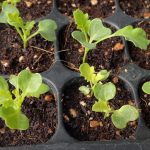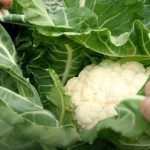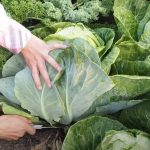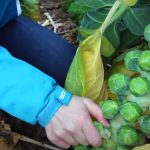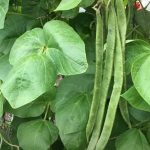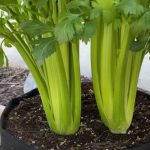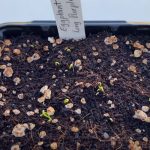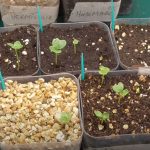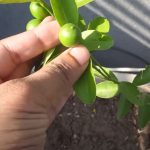You don’t know the difference between various soils for gardening? Check out my complete comparison and verdict on seed starting mix vs potting soil to see each type’s purpose and targeted phases. We know that seeds and seedlings need different attention compared to saplings, young trees, and adult trees.
I will instruct you on starting mix and potting soil varieties and how to employ them in your daily gardening activities so that you get the best yield out of your greens!
Seed Starting Mix vs Potting Soil: Ultimate Comparison
Everything you need to know to differentiate seed starting mix and potting soil is here! Learn how to choose the best types for your new baby plants.
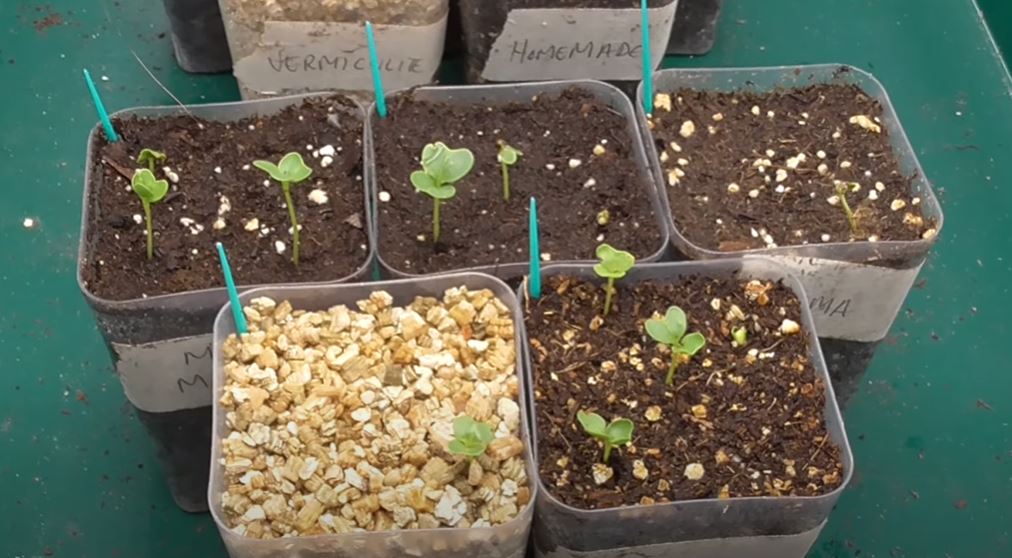
Seed starting mix
What is a seed starting mix, and when to use it?
Seed starting mix is a loamy and porous mixture designed especially for seeds that haven’t germinated. Nowadays, most people pick the paper towel method to germinate seeds, but there are many benefits to starting the growing process in soil, especially when you know how to select it.
Seed starting mix, in fact, doesn’t contain soil. Instead, it employs other natural materials to provide non-germinated seeds or seedlings with enough ventilation while retaining humidity for a greenhouse effect. If you are familiar with the greenhouse’s architecture and impact, you will know that it optimizes plant growth to the fullest during its first days or even months.
Unexpectedly, seed starting mixes contain few nutrients, so don’t expect to give your plants a boost of these if that’s your purpose. At an early age, plants don’t need extra nutrients to sprout since they already receive enough from their food store. Using fertilizers or nutrient-rich composts may do more harm than good to young seedlings. Thanks to their gentle and sterile nature, seed-starting mixes come in handy.
The benefits of using seed starting mixes for germination
- Starting mixes are airy and light, which creates the perfect environment for seeds and seedlings to grow roots without the fear of being compressed. This texture ensures that the roots never lack access to oxygen, an essential element for any plant’s normal development.
- Loamy seed starting mixes provide excellent ventilation and humidity, the most critical elements that make a seed’s radicle break the seed coat and for the cotyledons to grow.
- High-quality starting mixes don’t squish when watered, so they are well-drained and avoid root rot. The lack of tension of dirt against the roots also makes repotting less stressful for both the seedlings/trees and planters. The risk of breaking the roots is much lower when there isn’t heavy hydrated soil pulling on the fragile radicles.
- Starting mixes are usually very simple in components, and they don’t carry diseases or fungi that may threaten a tree’s health. That’s why they are ideal for seedlings, saplings, and even young trees. More giant trees need slightly more compact soil so that the root system can hold up the large trunk. They can also withstand microbes better, so this type of mix only stops being useful then!
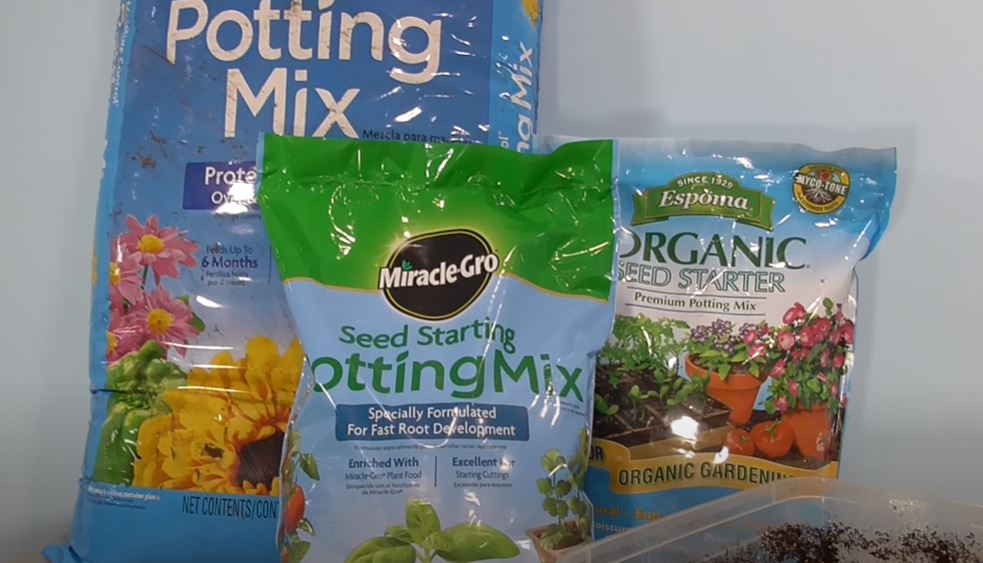
How to choose or mix your own seed starting mix
Mixing your own batches will allow you to save money instead of purchasing pre-mixed bags. Of course, buying a single bag of seedling starter is reasonable and economical if you intend to germinate about 10 – 20 seeds only. But if you are an avid gardener who sows dozens of seeds in each project, mixing your soil for germination and future use is the more cost-friendly way to go.
Some components you will need in your starting mix are: 2 parts coconut coir, 1 part perlite, and 1 part vermiculite.
- Coconut coir: Coconut coir or coconut fiber is obviously organic. But what you may not know is that it’s sterile, thus ideal for a seed starting mix. Coconut coir provides a well-drained structure for seeds and seedlings to breathe while activating the enzymes during the imbibition step. Furthermore, transplanting doesn’t shock the baby plants, thanks to the lightweight nature of coconut coir.
Can we get fresh coconut coir and process it ourselves? Yes, it’s possible. But I advise getting materials pre-processed from a reliable source if you aren’t familiar with the method.
Unfinished coconut coir may become the living ground for bugs and flies to lay their eggs, thus exposing the seedlings to threats if planters decide to use the unfinished and mishandled coconut coir.
- Perlite: If coconut coir isn’t porous enough, we must provide more air pockets for the radicles to access oxygen and thrive. This is precisely the purpose of perlites. These tiny white volcanic glasses contain lots of minerals and are highly hydrated.
Perlite helps prevent soil compaction, and improves drainage and aeration, allowing water to easily pass through the plant’s root system without drowning it. The pieces reduce waterlogging that causes root rot and fungal growth while still providing roots with enough water. Better drainage is what this ingredient brings.
- Vermiculite: Vermiculite pieces contain many minerals and are hydrated, the same as perlite. This material is needed for water retention.
What distinguishes it from perlite is that vermiculite is better than perlite in drainage. It holds water better but takes more time to let it go, so vermiculite is necessary for water-loving plants. If your cultivar doesn’t need much water, you can adjust the ratio of vermiculite to perlite.
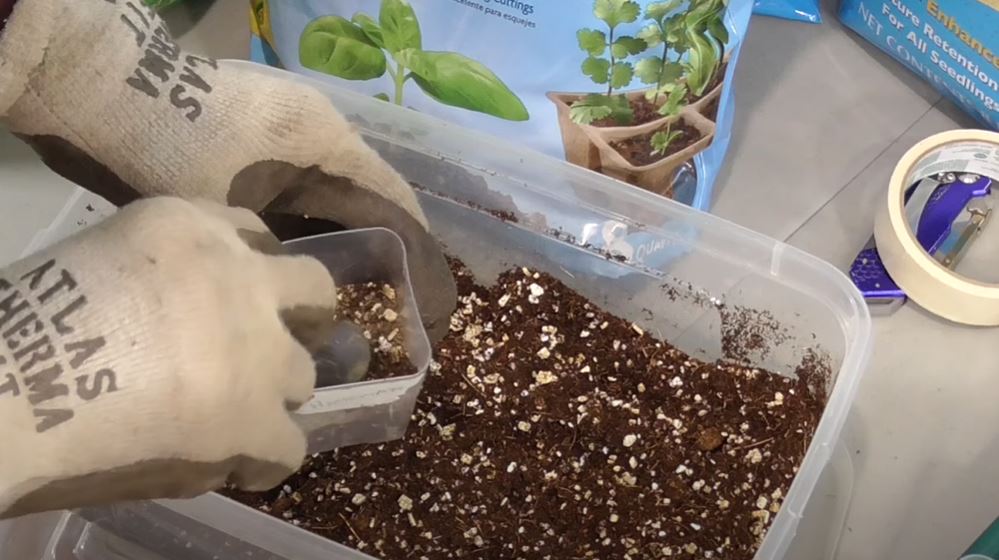
Potting soil
What is potting soil?
Potting soil may or may not contain soil, in contrast to seed starting mix, which is 100% soilless. This is the most significant difference between them. Furthermore, potting soil is designed with more components and more nutrients, so it’s safe to say that the blend is suitable for both seedlings and more mature plants.
Of course, judging by the name, potting soil offers an ideal living environment for growing plants in pots. The sizes of the plants should be manageable because this type of soil may be too porous and lightweight to support a large tree’s root system, trunk, and heavy branches in a pot.
The benefits of using potting soil
The purpose of potting soil is the same as garden starting mix: to provide better drainage for plants. The texture is relatively lightweight and promotes root health with water-retention characteristics. Depending on the blends that planters choose, the soil’s performance may vary greatly regarding water retention and aeration.
How to choose potting soil to encourage plant growth
Mixing your own blends is the best way! Learn the nature of the cultivars you care for and choose the proper ratio of potting soil to tend to their needs.
The basic potting soil recipe includes the following:
- Peat moss or coconut coir: Coconut coir is eco-friendlier than peat moss. But the nature of peat moss makes it the perfect balancer of alkaline soil. So, if you want to lower the pH level of your soil, use peat moss to reduce the alkalinity and heighten the acidic level.
- Compost: You can use plant matter or animal feces as organic compost, which adds nutrients to the soil you use (if you use soil, that is)
- Soil (Sand/ Silt/ Clay/ Loamy): Whatever type of soil you choose, it’s clear that you are adding more weight to the blend and adjusting the water retention performance. For example, if you select silt or clay, the potting soil will remain hydrated for longer. On the contrary, loamy and sandy soil will drain water faster.
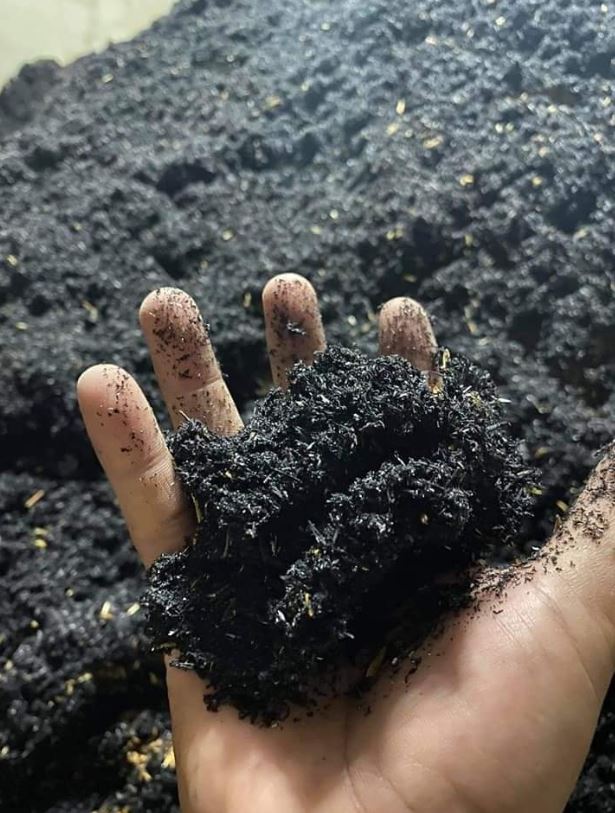
- Limestone (optional): Limestone is used to increase peat-based blends’ pH level. The ingredient neutralizes the acidity in peat moss. Consider the pH level of the peat moss and soil you use to make the potting soil blend (if you use soil).
- Fertilizer (optional): Compost assists soil, while fertilizer helps plant
3 Mistakes People Make When Using Seed Starting Mix And Potting Soil
What are the major 3 mistakes relating to the soil that greenies commit to putting their trees in a predicament? Check them out below!
They add compost to the seed starting mix
Organic compost, consisting of plant matter or animal waste, adds nutrients to the soil, which is ideal if the plants have grown over a few short inches. But, for seeds or shoots, compost may not be necessary because they tend to contain microbes if not treated correctly, thus killing the baby plants with a weak defense mechanism against diseases and fungi. Too many nutrients can stunt plant growth or burn the roots as well.
They plant the seeds too deep below the surface of the soil/mix
During the germination process, the seeds may not need sunlight to develop. But that doesn’t mean it’s okay to sow the seed deep in the soil, even if the soil is porous and lightweight. Planting the seeds too deep gives them access to too much water and causes rot.
You don’t inspect the soil you choose
Many times greenies have direct access to different soil types in their own garden and decide to use them without knowing what bugs, fungi, or matters occupy the grains. So, I advise purchasing fresh and inspected soils or checking your soil contents if you want to use the materials in your home.
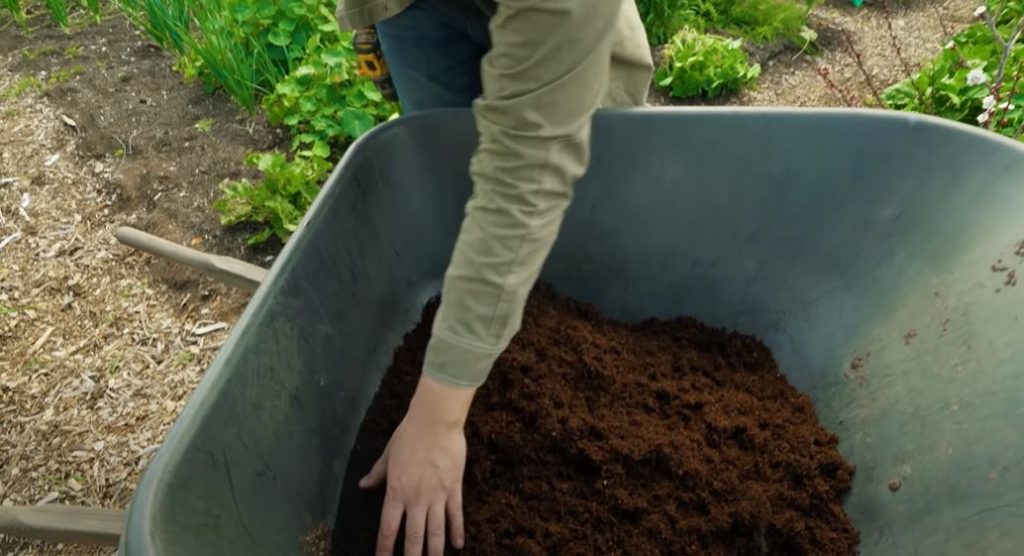
Top 3 Best Seed Starter Trays
These are the 3 best seed starter trays from my experience!
#1. Self-watering trays
Now we have self-watering trays that keep the soil/ mix moist without us having to water the plants too frequently. The system involves a capillary mat that distributes water from a reservoir throughout the entire tray filled with cells and their respective seedling. So, as long as there is water in the reservoir, your plants will receive enough moisture to survive and grow.
#2. Biodegradable peat pots
I favor biodegradable peat pots because (1) they are friendly to the environment and (2) they support convenient repotting and avoid stressing the plants. Gardeners can move the entire tray of peat pots into the soil and let the tray degrade while the roots slowly grow through their porous walls!
#3. Classic plastic cell flats
Plastic cell flats are long-lasting and reusable. They consist of many cells, each for one seedling to grow and promote individuals’ root growth. Of course, root bound also is scarce with this type of tray since they can’t evolve past the walls of the cells. Transplanting is a must with this type of tray.
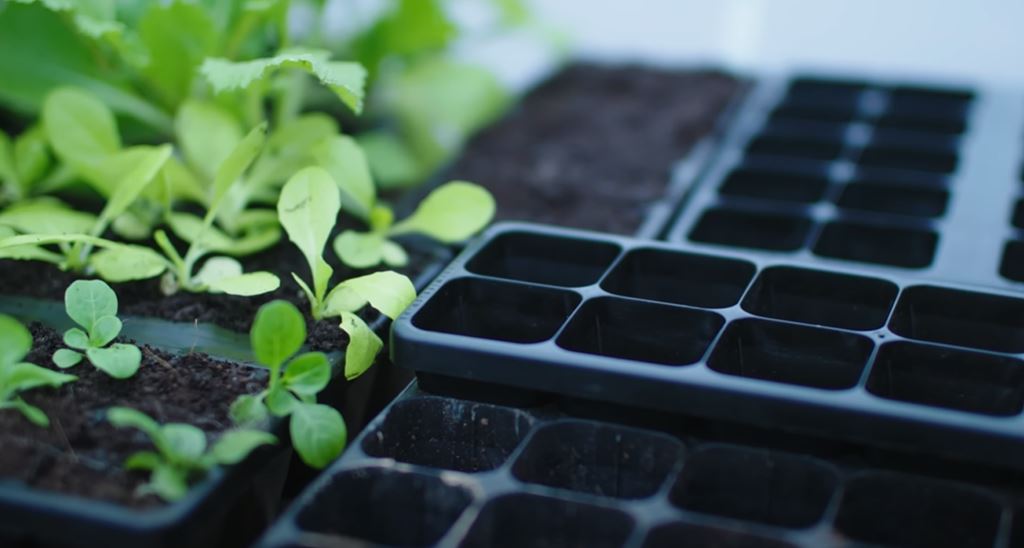
FAQs
What is the difference between potting soil and garden soil?
Garden soil is commonly used for outdoor gardening and is the natural topsoil we can find on land. The most significant difference between this type of soil and the potting soil is the contents and texture. Garden soil usually has more minerals and composts in it, and the texture becomes more compact due to high water retention. Potting soil is lighter and is commonly used for better roots aeration with more controlled water imbibition.
Should I use fertilizer for seed starting?
It’s not necessary and can even be harmful to the seeds. Before growing its first root and shoot, seeds receive all the nutrients they need internally from the food store. If excessive components penetrate, seeds may not even grow the first root due to the fertilizer impeding the water imbibition, causing burn and damage to the seed and seedlings.
When we already have a seedling over 2-3 inches, fertilizing is a great idea once in a while in moderated amounts. Before that, fertilizer needs to be mild and mixed carefully into the surface of the soil to avoid mismanagement.
What is the difference between potting mix and potting soil?
Potting mix is a 100% soilless medium for plants, but potting soil may or may not contain soil. Some common ingredients people may find in both are: perlite, compost, peat moss, orchid bark, etc.
